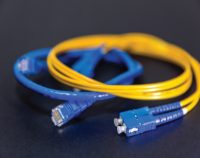A Guide to Offshore Wind Energy: 2 PDH
$12.00
Offshore wind turbines harness the energy of the ocean winds and turn it into electricity. This course introduces the basic principles of proposed US offshore wind facilities. The course summarizes a study conducted by EESI of existing European and Asian offshore wind farms. The topics addressed include techinical issues related to marine foundations and structures, transmission issues unique to offshore power generation, political and regulatory issues and the publics perceptions of proposed offshore wind farms. This course demonstrates that offshore wind energy has been successfully implemented in other parts of the world and that the potential for wind farms in U.S. waters is favorable.
SPECIFIC KNOWLEDGE OR SKILL OBTAINED
This course teaches the following specific knowledge and skills:
- Awareness of the basic principles of Offshore Wind Energy
- Awareness of the geographic areas in the U.S. that are canidates for wind farms
- Learn the affects of wind farms on commercial fishing and birds
- Public concerns about offshore wind farms relating to property values, local economy and jobs
CERTIFICATE OF COMPLETION
You will be able to immediately print a certificate of completion after passing a 15 question multiple-choice quiz. The quiz can be retaken unlimited times until a passing grade of 70% or better is earned. This course satisfies 2 professional development hours (PDH) of continuing education.
Related Courses
2017 NEC Significant Code Changes Part 4: 4 PDH
$24.00 Add to cartPart 4 of a multiple part series, this four (4) hour course covers and highlights some of the significant changes and updates in the 2017 Edition of NFPA 70: National Electrical Code (NEC) which was recently updated from the 2014 Edition of NFPA 70: National Electrical Code (NEC). The student will progress through all of article 600. The student will be identifying chapters, articles, and tables of where and what significant changes occurred (be it an addition, revision, or deleting), the student will review the 2017 version of the updated text, and understand the reason for the change with an explanatory brief.Instructor: Juan Pesante, PESPECIFIC KNOWLEDGE OR SKILL OBTAINED
This course teaches the following specific knowledge and skills:
- Become familiar with some of the significant changes including additions, deletions, and modification to the 2017 Edition of NFPA 70: National Electrical Code (NEC) from the 2014 Edition for Chapters 6
- Comprehend, after reviewing the significant changes and additions to the 2017 Edition of NFPA 70: National Electrical Code (NEC) the large scope of the changes to the code, thereby seeking additional and more thorough reviews of the entire code
CERTIFICATE OF COMPLETION
You will be able to immediately print a certificate of completion after passing a 20 question multiple-choice quiz. The quiz can be retaken unlimited times until a passing grade of 70% or better is earned. This course satisfies four (4) professional development hours (PDH) of continuing education.
Preview CourseClick “Preview Course” to View Prior to PurchaseClick “Add to Cart” to Purchase and Access QuizFundamentals of Fiber Optics: 3 PDH
$18.00 Add to cartThis online course is an introduction to concepts and theories of fiber optics and associated technologies. In this course you will learn about the history of fiber optics, its advantages & disadvantages, and the concepts of fiber optics including: the theory of light transmission through fiber optics, the structure of fiber optics, and properties of transmission.Instructor: Juan Pesante, PESPECIFIC KNOWLEDGE OR SKILL OBTAINED
This course teaches the following specific knowledge and skills:
- Understand the history of fiber optics
- Discuss basic fiber optics systems
- Understand the nature of light propagation and the electromagnetic theory of light
- Explain the properties of light reflection, refraction, diffusion, and absorption
- Explain the basic optical fiber material properties and how optical fibers transmit light
- Explain the ray and mode theories of light propagation along an optical fiber
- Discuss the processes of light attenuation and dispersion
- Understand the structure and components of fiber optic systems
CERTIFICATE OF COMPLETION
You will be able to immediately print a certificate of completion after passing a 15 question multiple-choice quiz. The quiz can be retaken unlimited times until a passing grade of 70% or better is earned. This course satisfies 3 professional development hours (PDH) of continuing education.
Preview CourseClick “Preview Course” to View Prior to PurchaseClick “Add to Cart” to Purchase and Access Quiz




